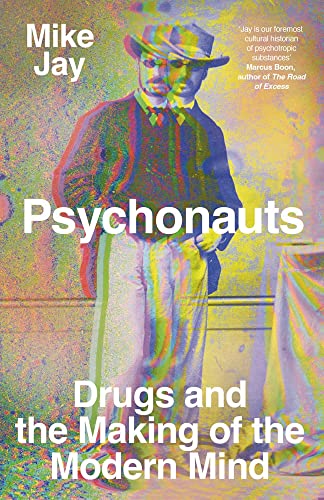Review: Psychonauts: Drugs and the Making of the Modern Mind

A psychonaut, according to a dictionary, is someone who explores altered states of consciousness, especially through hallucinatory drugs. The term apparently originates from 1970 when one author described the psychedelic, drug-induced experiences with his friend.
Mike Jay is a historian of mind-altering substances. His explanations of the easy availability of what came to be controlled drugs and the willingness of researchers to experiment on themselves is highly revealing as to the extent of the unregulated society then. Most scientists took care to minimise the inherent risks in their often sustained activity.
A number of those experimenting on themselves were medically qualified or experienced scientists so that careful preparatory research, working up incrementally from small doses using sterile needles and pure solutions could be expected.
A degree of shock was evident in the report in the New York Times of 25 October 1920 that more than 100 remarkable drugs had been undertaken by a woman scientist; a story, according to Mike Jay, that could have been filed accurately ‘on any day in the previous two centuries’ (p. 254).
With the descriptions of experiments by Sigmund Freud with cocaine and the moments of great revelation to William James with nitrous oxide, Jay describes a lost intellectual tradition of drug-taking that assisted with the birth of psychology, the discovery of the unconscious, and the emergence of modernism. Moreover, these ‘drugs’ – which the author considers an ‘anachronistic but convenient term’ (p.7) – had a huge effect on the individuals who then led to developments in Western science, philosophy, and culture.
After 1900, drugs were increasingly viewed as a social problem, and the long tradition of self-experimentation began to disappear. There was, however, a recognisable difference between a comparative small number of people experimenting or enjoying and large numbers of the public doing so: the latter threatened the stability of society particularly if the controlled drugs they sought or had become dependent upon were not available to them.
Jay describes the euphoric, but fictitious, description of the reaction of Dr Jekyll to a potion. Is it correct to say (p.89) merely that Robert Louis Stevenson was ‘a chronic sufferer from nervous exhaustion’? Perhaps it was more complicated than that. The contemporary view seems to have been that Stevenson had tuberculosis, but more recent views are have suggested other illnesses of the lungs and airways. However, a footnote in the book (p.89 fn.70) does indicate that Stevenson was trying as a matter of self-medication a variety of preparations.
The history of the mind-altering substances in the 19th century has been explained by Jay in an interesting, indeed compelling and sustained, narrative. It is a useful introduction to the other books that concentrate on the developments from the 1950s to the present time.
Mike Jay, Psychonauts: Drugs and the Making of the Modern Mind (Yale University Press, 2023)










